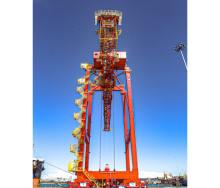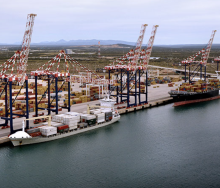The South African table grape industry broke several records this season.
Although South Africa’s table grape hectares have shrunk by 2% this past year, the industry recorded the largest national harvest ever. Of a total of 78.9 million cartons (4.5 kg equivalent), which was 4% more than last season, 77.4 million cartons were exported – 5% more than last season, said Jacques Ferreira, commercial affairs manager for the South African Table Grape Industry (Sati).
The industry also set a new record for weekly inspection volumes during the peak of the export season – weeks two to six of 2025 – by inspecting more than seven million cartons per week.
Sati expects table grape yields to increase further as more vineyards are replaced with higher-yielding cultivars. Inspection volumes have grown by 3.2% in the past 10 years.
The volume of exports shipped through the Cape Town Container Terminal and Cape Town Multi-Purpose Terminal combined increased from 82% in 2023/’24 to 90% in 2024/2025. Volumes shipped through Eastern Cape ports dropped from 11% of total exports last season to 6% this year, and through Durban from 7% to 3%.
One percent of South African volumes were shipped through Walvis Bay compared with 0% last year.
Namibia exported 8.8 million cartons of table grapes, compared with 9.1 million cartons last season.
Antoinette van Heerden, logistical affairs manager at the Fresh Produce Exporters Forum (FPEF), said improvements at the Port of Cape Town had contributed to the improved performance, including reduced waiting time and fewer vessels at anchor, provisions for more shifts over holidays and during recovery days after windbound periods, and the two 500 kVa generators, each with 60 container plug points, installed at the harbour in a public-private partnership.
Average productivity measured in gross crane moves per hour (GCH) averaged 13 in the first 13 weeks of the year, compared to 10 last year. Wind delays in February, however, numbered 245 hours, compared to the four-year average of 162 hours, and 214 hours in March (four-year average 140 hours), causing some shipping delays.
The industry this year benefited from a predictive logistics model based on a digital twin of the harbour, which modelled optimal grape network movements within the various constraints across South African ports.
“Possible next steps could include further leveraging the model to incorporate additional fruit types, which could provide more holistic supply chain insights,” said Mark Soden, the project lead with transport management and logistics company Transnova.













